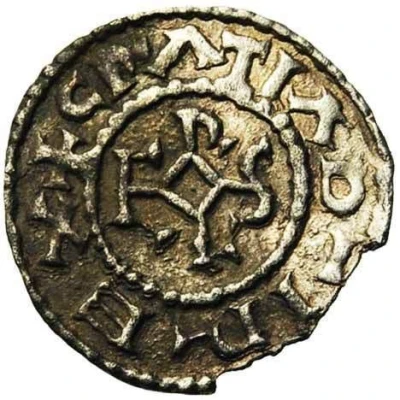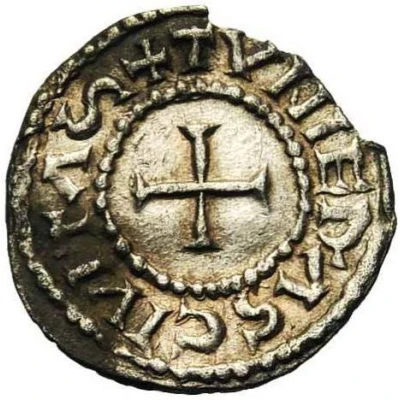


© Jean Elsen & ses Fils s.a.
Obol - Charles II Liège
| Silver | 0.76 g | - |
| Issuer | Lotharingia (Carolingian States) |
|---|---|
| King | Charles II the Bald (869-870) |
| Type | Standard circulation coin |
| Years | 869-875 |
| Value | 1 Obol (1⁄480) |
| Currency | Pound (855-959) |
| Composition | Silver |
| Weight | 0.76 g |
| Shape | Round (irregular) |
| Technique | Hammered |
| Orientation | Variable alignment ↺ |
| Demonetized | Yes |
| Updated | 2024-10-09 |
| Numista | N#350047 |
|---|---|
| Rarity index | 100% |
Reverse
Cross in a beaded circle, legend around.
Script: Latin
Lettering: ✠ TVNIERΛS CIVITΛS
Translation: City of Liège.
Interesting fact
One interesting fact about the Obol coin is that it was used as a form of currency during a time of great economic and political change in Europe. The Carolingian States, which issued the coin, were a series of kingdoms that emerged from the Frankish Empire and played a significant role in shaping the political and economic landscape of Western Europe during the Middle Ages. The Obol coin, specifically, was used during the reign of Charles II, also known as Charles the Bald, who ruled over a large portion of Western Europe, including modern-day France, Germany, and Italy. Despite its small size and relatively low value, the Obol coin was an important symbol of the economic and political power of the Carolingian States, and it continues to be a fascinating piece of history for collectors and historians today.